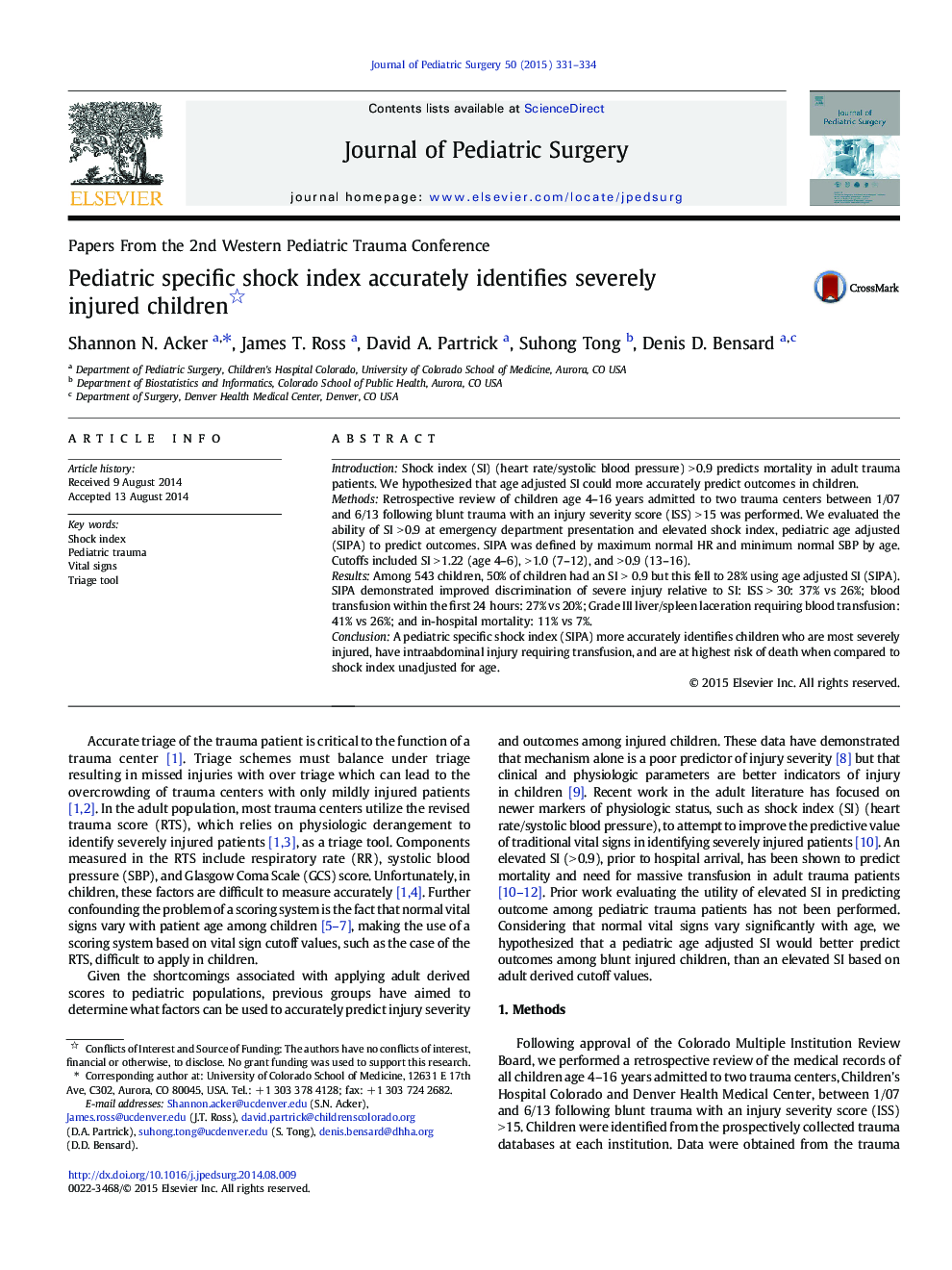| Article ID | Journal | Published Year | Pages | File Type |
|---|---|---|---|---|
| 4155648 | Journal of Pediatric Surgery | 2015 | 4 Pages |
IntroductionShock index (SI) (heart rate/systolic blood pressure) > 0.9 predicts mortality in adult trauma patients. We hypothesized that age adjusted SI could more accurately predict outcomes in children.MethodsRetrospective review of children age 4–16 years admitted to two trauma centers between 1/07 and 6/13 following blunt trauma with an injury severity score (ISS) > 15 was performed. We evaluated the ability of SI > 0.9 at emergency department presentation and elevated shock index, pediatric age adjusted (SIPA) to predict outcomes. SIPA was defined by maximum normal HR and minimum normal SBP by age. Cutoffs included SI > 1.22 (age 4–6), > 1.0 (7–12), and > 0.9 (13–16).ResultsAmong 543 children, 50% of children had an SI > 0.9 but this fell to 28% using age adjusted SI (SIPA). SIPA demonstrated improved discrimination of severe injury relative to SI: ISS > 30: 37% vs 26%; blood transfusion within the first 24 hours: 27% vs 20%; Grade III liver/spleen laceration requiring blood transfusion: 41% vs 26%; and in-hospital mortality: 11% vs 7%.ConclusionA pediatric specific shock index (SIPA) more accurately identifies children who are most severely injured, have intraabdominal injury requiring transfusion, and are at highest risk of death when compared to shock index unadjusted for age.
